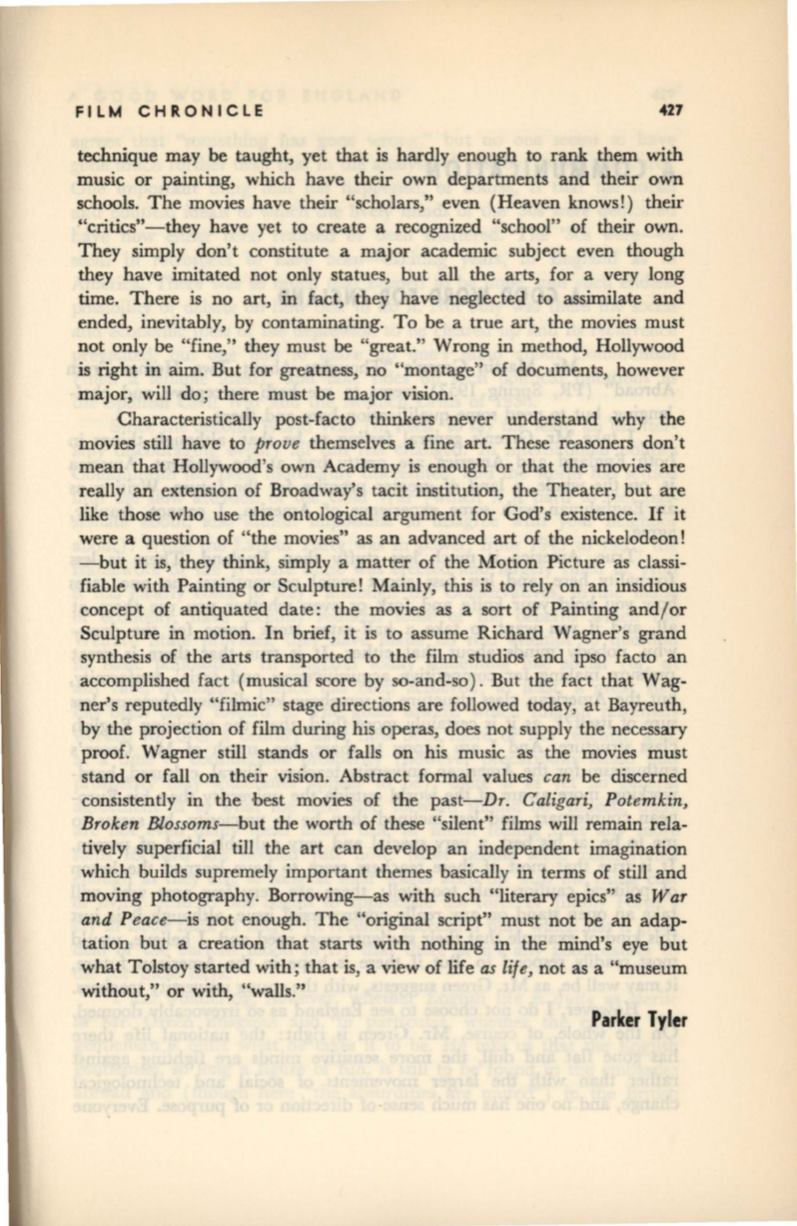
FILM CHRONICLE
427
technique may be taught, yet that is hardly enough to rank them with
music or painting, which have their own departments and their own
schools. The movies have their "scholars," even (Heaven knows!) their
"critics"-they have yet to create a recognized "school" of their own.
They simply don't constitute a major academic subject even though
they have imitated not only statues, but all the arts, for a very long
time. There is no art, in fact, they have neglected to assimilate and
ended, inevitably, by contaminating. To be a true art, the movies must
not only be "fine," they must
be
"great." Wrong in method, Hollywood
is right in aim. But for greatness, no "montage" of documents, however
major, will do; there must be major vision.
Characteristically post-facto thinkers never understand why the
movies still have to
prove
themselves a fine art. These reasoners don't
mean that Hollywood's own Academy is enough or that the movies are
really an extension of Broadway's tacit institution, the Theater, but are
like those who use the ontological argument for God's existence.
If
it
were a question of "the movies" as an advanced art of the nickelodeon!
-but it is, they think, simply a matter of the Motion Picture as classi–
fiable with Painting or Sculpture! Mainly, this is to rely on an insidious
concept of antiquated date: the movies as a sort of Painting and/or
Sculpture in motion. In brief, it is to assume Richard Wagner's grand
synthesis of the arts transported to the film studios and ipso facto an
accomplished fact (musical score by so-and-so). But the fact that Wag–
ner's reputedly "filmic" stage directions are followed today, at Bayreuth,
by the projection of film during his operas, does not supply the necessary
proof. Wagner still stands or falls on his music as the movies must
stand or fall on their vision. Abstract formal values
can
be discerned
consistently in the best movies of the past-Dr.
Caligari, Potemkin,
Broken Blossoms-but
the worth of these "silent" films will remain rela–
tively superficial till the art can develop an independent imagination
which builds supremely important themes basically in terms of still and
moving photography. Borrowing-as with such "literary epics" as
War
and Peace-is
not enough. The "original script" must not be an adap–
tation but a creation that starts with nothing in the mind's eye but
what Tolstoy started with; that is, a view of life
as life,
not as a "museum
without," or with, "walls."
Parker Tyler


